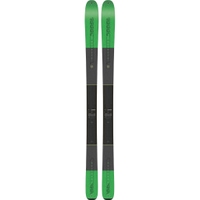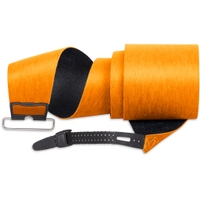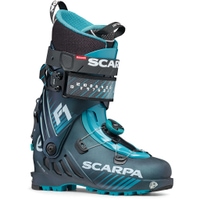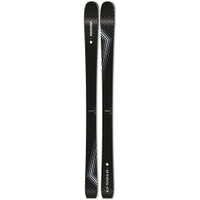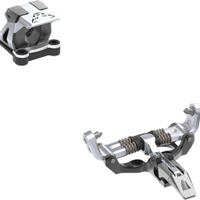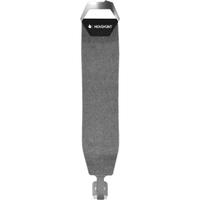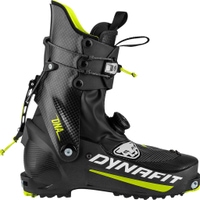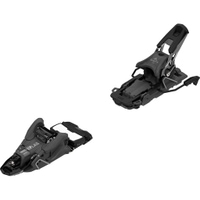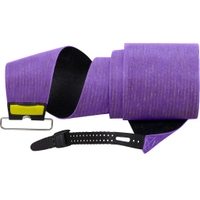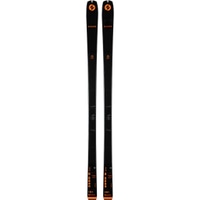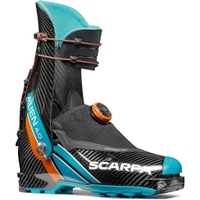Ski touring is not only the favourite sport of many of our colleagues at Sport Conrad, it has also become a mainstream sport. Whether ski touring on secured pistes or ski touring in search of fresh powder, they all have one thing in common: climbing mountains under their own steam. The key: the right ski touring equipment. Season after season, manufacturers work tirelessly to make the gear safer, lighter and simply better. And honestly, who wants to carry unnecessary weight up the mountain?
We put together a guide to help you find the right touring skis, bindings, touring boots and skins.

SKI TOURING EQUIPMENt: The Basics
Basic touring equipment includes touring skis with touring bindings and climbing skins, poles, crampons and touring ski boots. If you don’t use your touring skis only on secured slopes, you will need avalanche rescue equipment. Wearing a helmet is also recommended.
types of ski mountaineers
Ski touring equipment is as varied as the people who use it. That’s why the first thing to think about is what you want to do with your ski touring gear. Are you more of an all-rounder who wants to do everything, or do you already know that powder runs are most important to you? Only then can you choose the right equipment. Generally speaking, there are four different types of ski touring, although there are subtle differences within each type. Below we will briefly explain the differences between the four types of ski touring, from allround to freetouring, and what makes them different, and then go into detail about the equipment that is suitable for each type of ski touring.
The Allrounder: A bit of everything
As the name suggests, an all-round ski touring set is suitable for both beginners and experienced ski tourers and guides. Whether you are looking for touring skis for a local mountain tour or a versatile high mountain tour, the range of uses for all-round equipment is wide. This set gives you all the equipment you need. So you are well prepared for your ski tour in the Alps – whether in Bavaria, Tyrol, Switzerland or elsewhere in winter.
Ascent-orientated ski touring: The way up is the goal
Are you looking for more challenging ski touring this winter? Do you like to travel quickly and with light equipment? You don’t want to carry too much weight up the mountain because long ascents are your thing? If so, then you can undoubtedly describe yourself as a climber. For those ski mountaineers, it doesn’t matter if they’re improving their fitness on a training tour on a local mountain or on a multi-day ski tour with long climbs far away from civilisation – the idea is to climb as fast as possible with as little weight as possible.
Freetourer: powder runs in open terrain
Are you a passionate freerider who prefers to draw lines through untouched powder, love steep slopes and enjoy narrow gullies? Do you usually make the ascent on your own, but sometimes you also use a lift to get you a bit closer to your goal? Then you are a freeride touring skier, because you want to enjoy epic descents first and foremost – weight is secondary, because for optimum downhill performance the skis are considerably wider and the boots are typically designed for downhill performance.
The racer: The faster the better
The racers are probably the smallest group of ski tourers. By the time you see them on the mountain, they have usually sprinted past you. They are performance-oriented and feel right at home in their race suits, because they know that weight plays a crucial role in performance. They don’t expect their gear to work miracles downhill, but uphill everything has to be tuned for performance. Does this appeal to you, and would you like to train on floodlit slopes in the evenings in winter and master tours to achieve the best times in competitions? Then race ski touring is for you!

HOW DO YOU CHOOSE YOUR SETUP – SKI, BINDING, AND BOOTS?
After getting a brief overview of the different types of tours, we now come to the next important point of every ski tour: the equipment! Equipment deserves more time than it is usually given and choosing the right equipment should be carefully considered. Because only properly put together ski touring equipment is functional and meets your needs!
All-round ski touring gear: at home anywhere
The all-rounder wants to have it both ways – fun on the way up and fun on the way down. But as we all know, this is not always an easy task. You need to find a compromise that covers all your needs and requirements. The classic all-round touring ski is suitable for both ascents and descents. The waist width is usually between 85 and 90 mm. They weigh between 1200 and 1400 grams.
If, after a strenuous ascent, a well-deserved descent puts a smile on your face, then we recommend a downhill-oriented ski. Here you have to grit your teeth on the way up and drag a ski weighing between 1400 and 1600 grams up the mountain. On the descent you will be rewarded with a 95mm waist width under the binding and significantly more buoyancy than with narrower skis.
Both frame bindings and the much lighter pin bindings can be used as all-round touring bindings, although the pin bindings are much lighter and have become the standard on the market. The safety of pin bindings has steadily improved over the last few years. For advanced and heavier riders, many manufacturers offer very stable models with a high Z-value. But beware: frame bindings are not compatible with some touring boot models because the front and back openings are designed for crampons only and are therefore too small. For this reason, some touring boots have interchangeable soles so that they can be used with both frame and alpine bindings.
When it comes to all-round touring boots, there are also downhill-oriented models, usually with four straps, and lighter three-strap models that offer more mobility when climbing. Thanks to modern plastics, light and flexible boots are now often stiff enough and good enough for downhill skiing. A more recent development in touring ski boots is the use of the BOA closure system. This means that touring boots can be closed quickly and easily, and adapt to the shape of the foot.
Performance-oriented equipment: Every ounce counts
Ascent-oriented ski tourers rely on lightweight, manoeuvrable and relatively narrow touring skis. But again, you need to decide whether you want to get up the mountain quickly or whether you don’t want to miss out on the fun of the descent. If you only want to climb, you should choose a lighter model. Ideally, these should weigh around 800-1100g and have a waist width of between 72 and 82mm. With this combination of weight and shape, they offer excellent climbing performance and are particularly suitable for performance-oriented, fast climbs.
If you don’t want to miss out on the descent, choose the slightly wider models with a waist width of 82-95mm. This gives you more surface area under the skis for better downhill performance. At 1100-1300g – around 200g more – you pay for the extra buoyancy. Despite an 88mm waist, the top models weigh just under 1000g. What this means for you is: more lift, less weight. The best choice for an uphill ski is a light pin binding with an adjustable Z-value. With or without ski stoppers, the choice of binding remains a personal one. An alternative to ski stoppers are safety straps, but these are rarely used and pose a certain potential risk.
When choosing touring ski boots, you can also consider weight. Mountaineering touring boots weigh around 1300g each and usually have two or three buckles – or a combination of buckle and BOA system. Their light weight and mobility make them ideal for climbing all the peaks in the best possible time. On the descent, of course, they offer less power than heavier models due to the weight saving and are not as well insulated. But hey, at the speed you’re going, you can do without it.
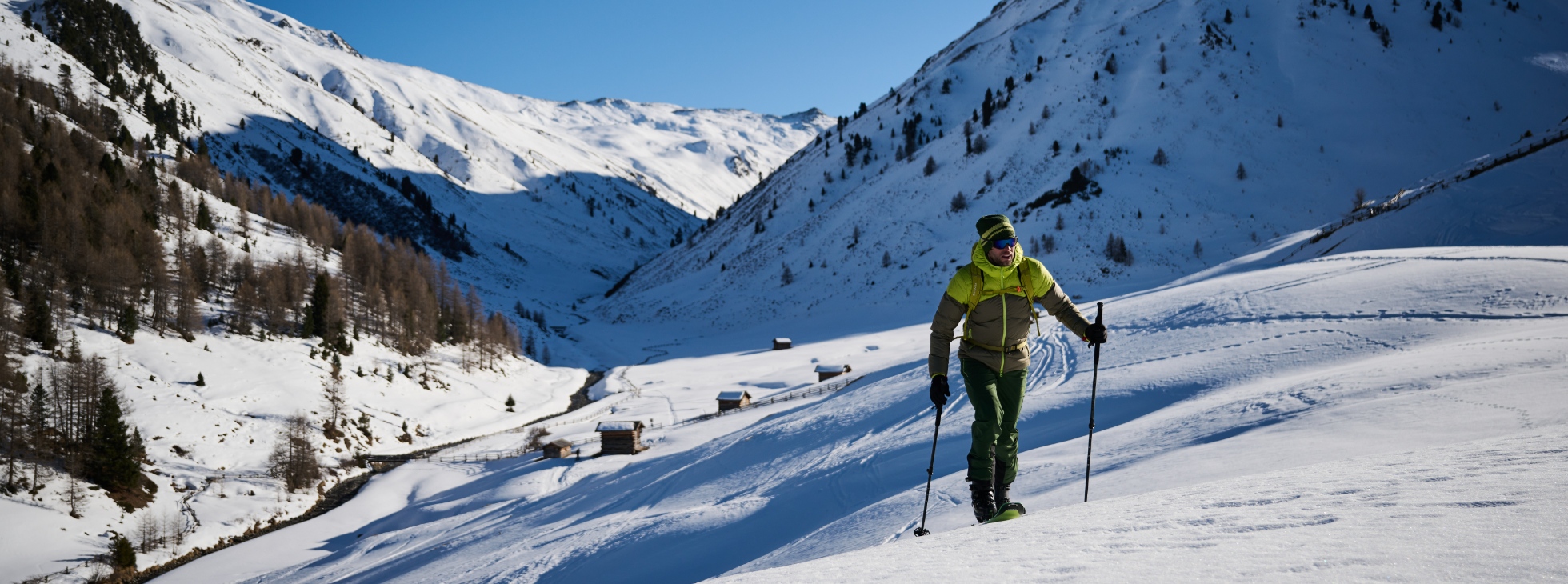
Freetouring Equipment: A lot (of ski) helps a lot
Freetouring gear is all about striking the right balance between performance and weight. If you want to enjoy powder snow and steep descents, but have to do it under your own steam, you need to find a good compromise. Accordingly, freetouring skis are wider and heavier than classic touring skis – compared to pure freeride models they are often narrower and focus on lighter materials.
Moderate freertouring models are available with a waist width of 95mm and a weight of between 1300g and 1700g per ski. If you’re looking for even more flotation for those special powder days, you can’t go wrong with models with over 100mm under the binding. Of course, weight increases with waist width. Freeride skis for downhill athletes can weigh up to 2000g per ski. This is where you buy freeride happiness with a lot more work on the ascent.
Downhill-oriented pin bindings and more stable frame bindings with higher Z values are particularly suitable as free touring bindings. It should be noted that some touring ski boot models are not compatible with frame bindings and the adjustment range will need to be tailored to the sole length of the boot.
A more stable and rigid ski touring boot is recommended for free touring. These usually have four buckles and are heavier than all-round models. However, there are also 3-buckle shoes that are just as good for steep descents. It is important that your freetouring shoes provide good power transmission to the skis.
Race Gear: It couldn’t be any lighter
When it comes to race touring gear, every gram counts. However, these savings have an impact on the descent, as racers have to make some compromises in terms of riding characteristics. Race skis have an average waist width of 65 mm, are either 151 cm or 161 cm long and weigh between 650 and 800 g per ski. This means they meet the requirements of race organisers.
If you want to save that much weight on your skis, you should do the same with your bindings. A light pin racing binding weighing less than 130g is recommended. Understandably, pin bindings in this weight class come with compromises: They no longer have an adjustable release mechanism, the stoppers are usually omitted for weight reasons, and the screws for assembly are reduced to the bare minimum. However, the race performance of the bindings does not suffer as a result.
Once you have chosen your skis and bindings, the next step is to find a weight-optimised race boot. Touring boots for serious ski mountaineers are, above all, very light! They also give ski mountaineers extreme mobility on the ascent – it feels as comfortable as wearing a light mountain boot. Thanks to maximum weight reduction, most boots weigh in at around 850 grams. Compromises have to be made when it comes to insulation, and the mediocre downhill performance has to be compensated for by skilful skiing technique.
SUMMARY – WHAT EQUIPMENT DO YOU NEED FOR SKI TOURING
Ski Touring Equipment for Allrounders
- Classic allround skis: ∅ waist width between 82-95mm/ 1200-1400g per ski
- Downhill oriented skis: ∅ waist width between 95-100mm/ 1400-1600g per ski
- Tec-binding with a high release range or frame binding
- Ski touring boots with more than 2 buckles or BOA system fit the best. Be careful about the boot choice because not all the boots are compatible with all bindings
Equipment for Uphill oriented ski tourers
- Light, agile and narrow skis / ∅ width between 72 – 88mm / 1000-1300g per ski
- Tec-binding with an adjustable release range
- Flexible and agile ski-touring boots with 2-3 buckles or BOA system / weight around 1300g
Equipment for Freeride ski tourers
- Classic Freeride skis: ∅ width 95mm and up / 1300-1700g per ski
- Downhill oriented freeride ski: ∅ width between 110-120mm / 1600-2200g per ski
- Tec-binding with a high release range or frame binding
- Ski touring boots with more than 3 buckles or BOA system
- Again, be careful as not all boots are compatible with all bindings
Equipment for race ski tourers
- Length of the ski between 151 – 161cm / ∅ width 65mm / 650 – 800g per ski
- Tec-binding with less than 130g
- Light ski touring boots with a high flexibility and agility/ up to 850g
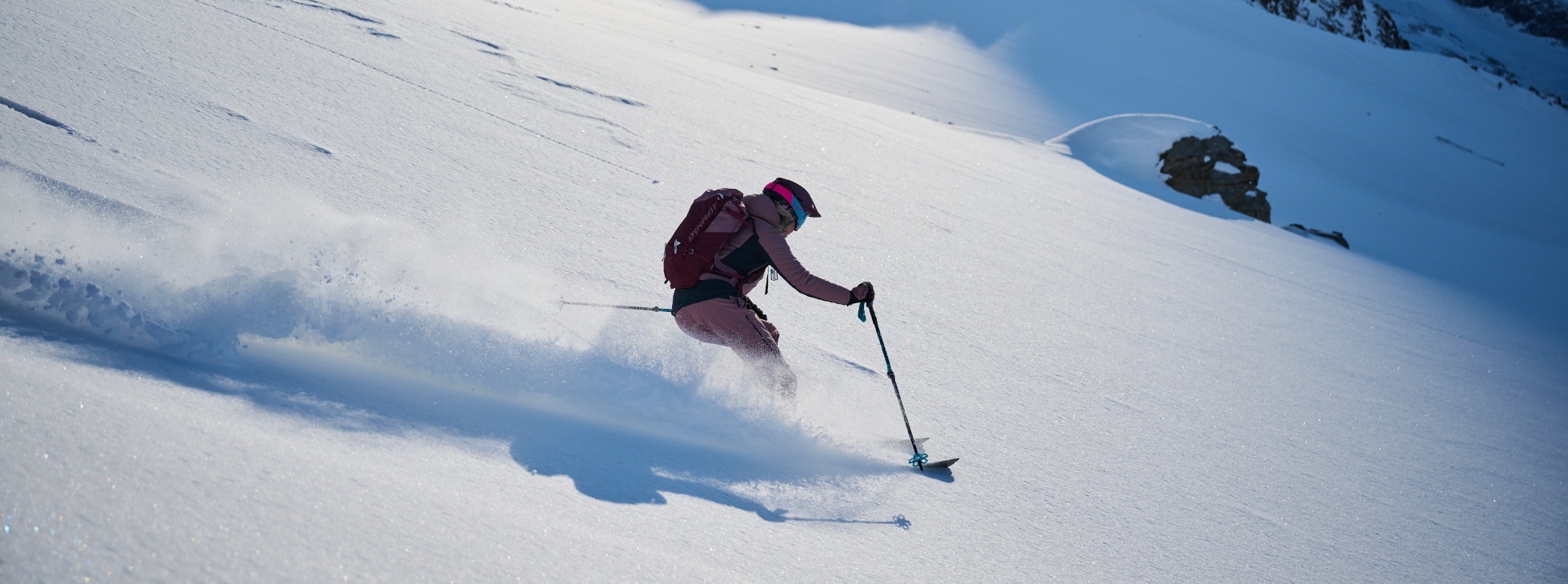
THIS IS WHAT YOU NEED TO CONSIDER WHEN BUYING
In general, heavier skis are built to be a little more stable and therefore run smoother at higher speeds. Lighter skis with a lower carbon content are softer and are recommended for beginners and recreational skiers. But the same applies here: There is no such thing as a one-size-fits-all ski. Before you buy, think carefully about your preferences and what is most important to you. If you have any questions, you can always contact our customer service department or visit one of our three stores. We will be happy to advise you!
Ski Length
The rule of thumb when choosing the length of your skis is: height minus 10 cm. This length ensures easy handling when climbing and sufficient buoyancy and smoothness when descending. Good skiers and downhill-oriented tourers can choose slightly longer skis, but they should not be more than 10 cm longer than their height. Mountaineering touring skiers will choose a slightly shorter ski, which should at least reach up to the chin. The exception is racers, who choose even shorter skis (in favour of lower weight). Read more about the right ski length in our ski length guide.
Ski Touring Boots
The touring ski boot is one of the most important pieces of equipment on a ski tour. All too often, blisters on the first tour spoil the experience. Choose your touring ski boot carefully, try it out for a while and do not skimp on the price. To find the right boot, measure the length of your foot and convert it to the Mondopoint size. It is important that the touring boot fits well. If the boot you want doesn’t fit, even though it’s the right size, many manufacturers offer models with pre-shaped thermal insoles. These can be heated at our stores to fit your foot. If that doesn’t help, widening the upper a little may.
There are two anatomical differences between women’s and men’s footwear. Firstly, women of the same height tend to weigh slightly less. Therefore, a softer and lighter shell is sometimes used. Secondly, because women’s calf muscles are a little deeper, the upper is a little shorter than a comparable men’s model. When using pin bindings, make sure the binding is compatible with the boot, as specified by the manufacturer, to avoid false releases. Not every boot on the market is guaranteed to work perfectly.
Climbing skins
When it comes to touring skins, it is important that they adhere well to the base of the ski and provide sufficient support when climbing. Otherwise, the trip will be strenuous or even dangerous. Many skis come with skins that are pre-cut to fit your skis perfectly. Cut skins can be adjusted by hand to fit your skis. Find out what to look out for when cutting skins in our guide: Cutting ski touring skins. Skins come in two main types of fur: Mohair skins have better gliding properties, especially in cold temperatures, and are less prone to clumping. Nylon skins are stronger, more durable and less expensive. They grip better on steep and icy surfaces.
A blend of nylon and mohair is a good compromise. These climbing skins have become standard. Proper care and impregnation will make the skin water-repellent and less prone to clumping. Pure mohair skins are best for racing. Racing skins should have a rubber nipple at the front to match the groove on the tip of the ski, allowing the skin to be removed without having to remove the binding. A hook at the end of the ski is not common.
Crampons
When the snow surface is frozen hard, skins can quickly lose their grip, especially on steep terrain. Before it gets dangerous, you should use crampons. They provide a firm grip on hard surfaces. When you step on them, the sharp side plates dig into the hard snow and give you the grip you need. To ensure that the crampons can fully penetrate the snow, it is advisable to climb without a climbing aid.
Each binding manufacturer offers its own models for attaching crampons. To find out which crampons are compatible with your bindings, contact the binding manufacturer or ask in one of our shops. Not all crampons fit all bindings. The crampons should be slightly wider than the width of your skis.
CHECKLIST: WHAT DO YOU NEED FOR SKI TOURING
- Touring skis, ski touring binding and ski touring boots
- Telescopic or folding ski poles
- Climbing skins and crampons
- Safety equipment (helmet, tracker beacon, avalanche probe, shovel, airbag backpack, first aid kit, etc.)
- Ski touring apparel
- Ski touring backpack
- Something to eat and drink
- Helmet & Googles
- Sunscreen
→ You can download our ‘Ultimate Packing List’ for your next ski touring adventure here.
Finally, the ski touring basics explained using Dynafit as an example. Here you can see how a complete ski touring set works and what you should pay attention to with your equipment.
Are you a ski touring enthusiast? Then read on here:
→ How to properly care for your climbing skins
→ Absolutely essential: The avalanche gear you need


